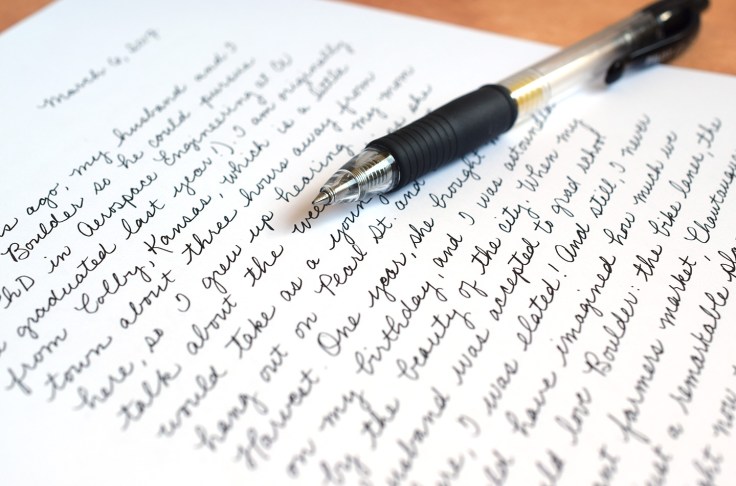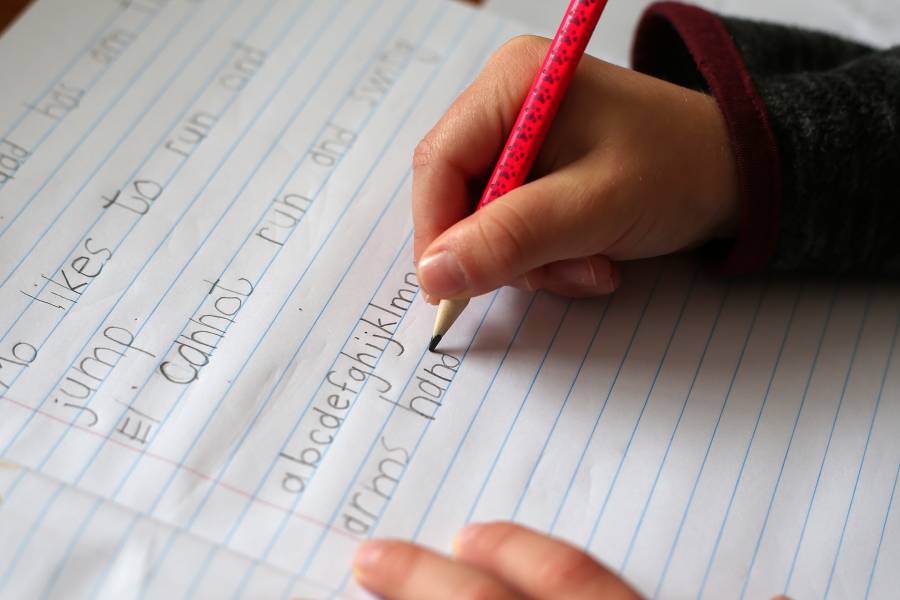
In the fast-paced world of journalism, mastering the art of effective writing is crucial. This article presents ten essential journalism writing tips that will enhance your skills and captivate your readers.
From developing a strong news angle to crafting compelling headlines, we delve into the techniques that will make your work stand out.
Learn how to write with clarity and conciseness, conduct effective interviews, and tell compelling stories.
With these valuable insights, you'll be well-equipped to navigate the ever-evolving landscape of journalism.
The Power of a Strong News Angle
The power of a strong news angle cannot be underestimated in the world of journalism. Finding unique angles to a story is essential for captivating readers and keeping them engaged.
A news angle is the specific perspective or focus that a journalist takes when reporting on a particular event or issue. It is what sets a story apart from others and makes it interesting to the audience. By finding a unique angle, journalists are able to present information in a way that grabs attention and creates intrigue.
This involves digging deeper into a story, looking for different angles or perspectives that may not have been previously explored. A strong news angle not only captures the reader's attention but also provides a fresh and insightful perspective on a topic, making it a vital tool for journalists in today's rapidly evolving media landscape.

Crafting Compelling Headlines
Crafting compelling headlines is an art that requires a combination of creativity and strategic thinking. Attention-grabbing titles are essential in journalism as they serve as the first point of contact between the readers and the news story.
Utilizing emotion in headlines can greatly impact the reader's engagement with the content. Emotional appeal triggers curiosity, empathy, or even shock, prompting readers to click and explore further. By using strong and descriptive language, journalists can evoke emotions such as excitement, intrigue, or urgency in their headlines.
However, it is crucial to strike a balance and ensure that the headline accurately reflects the content of the article. Crafting compelling headlines is a vital skill in journalism, as it not only captures the reader's attention but also entices them to delve deeper into the story.
Writing Clear and Concise Sentences
Effective communication in journalism requires writers to employ clear and concise sentence structure. Concise writing allows journalists to convey information in a precise and efficient manner, ensuring that readers can easily understand the message.
To achieve this, writers should focus on the following:
- Eliminate unnecessary words: Remove any redundant or irrelevant information from sentences to streamline the message.
- Use active voice: Active voice helps to create stronger, more direct sentences that engage readers.
- Avoid jargon and technical terms: Instead, use simple and accessible language that appeals to a broader audience.
- Break up long sentences: Lengthy sentences can confuse readers, so it is essential to divide them into shorter, more manageable parts.
The Importance of Accuracy in Reporting
Ensuring accuracy in reporting is crucial for journalists at all times. Accuracy is not just a virtue; it is the backbone of responsible journalism. Journalists have a responsibility to provide accurate and reliable information to the public, as they play a vital role in shaping public opinion and influencing decision-making processes.
Accuracy builds trust and credibility, and without it, journalism loses its integrity. The importance of accuracy in reporting cannot be overstated, as it affects not only the reputation of journalists but also the lives of those who rely on their work.

In a world where misinformation spreads rapidly, accurate reporting serves as a compass, guiding individuals towards truth and helping societies make informed choices. Journalists must prioritize accuracy in their reporting to serve their audience with the highest level of professionalism and commitment to the truth.
Effective Interviewing Techniques
How can journalists gather valuable information while conducting interviews, and what role do effective interviewing techniques play in producing high-quality journalism?
Effective questioning:
Open-ended questions encourage interviewees to provide detailed and insightful answers.
Follow-up questions help journalists delve deeper into the subject matter and clarify any ambiguity.
Active listening:
Paying close attention to what the interviewee is saying allows journalists to pick up on subtle cues and extract valuable information.

Non-verbal cues, such as body language and tone of voice, can provide additional context and insight.
Incorporating Quotes to Enhance Your Writing
Journalists can utilize quotes in their writing to add depth and credibility to their reporting. Incorporating quotes allows journalists to present different perspectives and opinions, giving readers a more comprehensive understanding of the topic at hand.
When using quotes, it is important for journalists to maintain their writing style, ensuring that the quotes seamlessly fit into the overall narrative. A well-incorporated quote should enhance the article's message and provide additional insight or evidence to support the journalist's claims.
To maintain a strong writing style, journalists should carefully select quotes that align with their overall tone and voice. They should also consider the relevance and reliability of the source from which the quote is taken. By incorporating quotes from experts, eyewitnesses, or individuals directly involved in the story, journalists can add credibility to their reporting and strengthen their arguments.
However, it is crucial to ensure that the quotes are accurately attributed and presented in a way that is clear and concise. By using quotes strategically, journalists can elevate their writing and create more engaging and impactful articles.
The Art of Storytelling in Journalism
Through the art of storytelling, journalists have the power to captivate readers and convey complex information in a compelling and relatable manner. By utilizing the power of narrative storytelling, journalists can engage readers on a deeper level and make the news more accessible.
One effective technique is to incorporate personal anecdotes, which helps readers connect with the story on an emotional level. This can be achieved by including firsthand accounts or experiences that humanize the subject matter.

Additionally, storytelling allows journalists to present information in a coherent and structured way, making it easier for readers to understand and retain. By weaving together facts, quotes, and personal narratives, journalists can create a compelling narrative that not only informs but also entertains and resonates with their audience.
Thorough research and meticulous fact-checking are essential for ensuring the accuracy and credibility of the information presented in journalism. The fact-checking process involves verifying the information gathered from various sources to ensure its reliability.
Reliable sources play a crucial role in this process, as they provide accurate and trustworthy information. Journalists must use a variety of sources, such as reputable news outlets, academic journals, and expert interviews, to gather information and cross-reference facts.
It is important to note that relying on a single source can lead to biased or incomplete information. By conducting thorough research and fact-checking, journalists can provide their audience with credible and accurate news stories, upholding the principles of journalism and fostering an informed and free society.
When it comes to journalism, writing for different audiences and platforms is crucial for effective communication. Audience adaptation techniques help journalists tailor their writing to specific groups, ensuring that the message resonates with the intended readership.
Additionally, platform-specific writing strategies enable journalists to optimize their content for various mediums, such as print, online, or social media.
Audience Adaptation Techniques
As journalists, we must master the art of audience adaptation in order to effectively communicate our message to different audiences and platforms. This involves tailoring our writing style, tone, and content to suit the specific needs and interests of our target audience.

To achieve audience engagement, we can employ various communication techniques, including:
Understanding the audience: Conduct research to gain insights into the preferences, values, and interests of the target audience.
Tailoring the message: Craft the content in a way that resonates with the audience and addresses their concerns.
Choosing the right platform: Determine the most suitable platform to reach the target audience, whether it's print, online, or social media.
Utilizing visuals: Incorporate images, infographics, or videos to enhance the audience's understanding and engagement.
Using appropriate language: Adapt the language and tone to match the audience's level of comprehension and preferences.
Crafting content that is tailored to the specific needs and preferences of different audiences and platforms is essential for effective journalism. In today's digital age, writing for social media has become an integral part of reaching and engaging with readers.

When writing for social media platforms, it is important to understand the platform's unique characteristics and limitations. Twitter, for example, requires concise and punchy writing due to its character limit, while Instagram allows for more visual storytelling.
Tailoring content for each platform involves adapting the tone, style, and format to suit the preferences of the audience. This could mean using hashtags, emojis, or incorporating multimedia elements such as images or videos.
Editing and Proofreading for a Polished Piece
One important step in the writing process is to conduct thorough editing and proofreading to ensure a polished piece of journalism. Editing and proofreading are essential to catch any errors or inconsistencies in grammar, spelling, punctuation, and style. By following grammar rules and style guidelines, journalists can maintain the clarity and professionalism of their work.
It is crucial to review the content for accuracy, coherence, and logical flow, ensuring that the information is presented in a clear and concise manner. Additionally, editing and proofreading allow journalists to refine their language and tone, making their writing more engaging and impactful. Attention to detail is key in this process, as even small mistakes can undermine the credibility of the entire piece.
Frequently Asked Questions
How Can a Journalist Effectively Incorporate Multimedia Elements Into Their Storytelling?
Incorporating visuals and interactive elements in multimedia journalism allows journalists to engage their audience and enhance the storytelling experience. This form of digital storytelling offers a dynamic and immersive approach to convey information and foster a deeper understanding of the news.
What Are Some Common Challenges Journalists Face When Conducting Interviews, and How Can They Overcome Them?
Challenges journalists face when conducting interviews include gaining access to sources, maintaining objectivity, and navigating sensitive topics. Solutions include building trust, conducting thorough research, and asking thoughtful questions to elicit meaningful responses.
What Are Some Strategies for Finding Reliable Sources and Conducting Thorough Research for an Article?
Finding reliable sources and conducting thorough research for an article are crucial for journalists. By utilizing various research techniques, such as conducting interviews, reviewing documents, and fact-checking, journalists can ensure accuracy and credibility in their reporting.

Journalists can adapt their writing style to different platforms by considering the specific audience and engagement strategies. This ensures effective communication and resonates with readers. Techniques such as concise writing and tailoring content to suit online or social media platforms are crucial.
What Are Some Key Considerations for Journalists When Editing and Proofreading Their Work for Publication?
When editing and proofreading their work for publication, journalists should consider various techniques such as checking for grammar and spelling errors, ensuring clarity and coherence, verifying facts and sources, and maintaining a consistent tone and style.
 Writing TipsCreative WritingJournalingSketching TechniquesBuying GuidesPrivacy PolicyTerms And Conditions
Writing TipsCreative WritingJournalingSketching TechniquesBuying GuidesPrivacy PolicyTerms And Conditions
